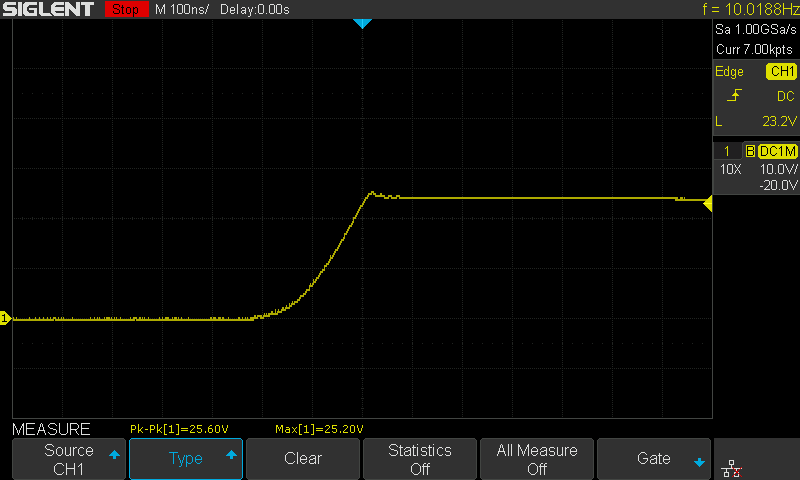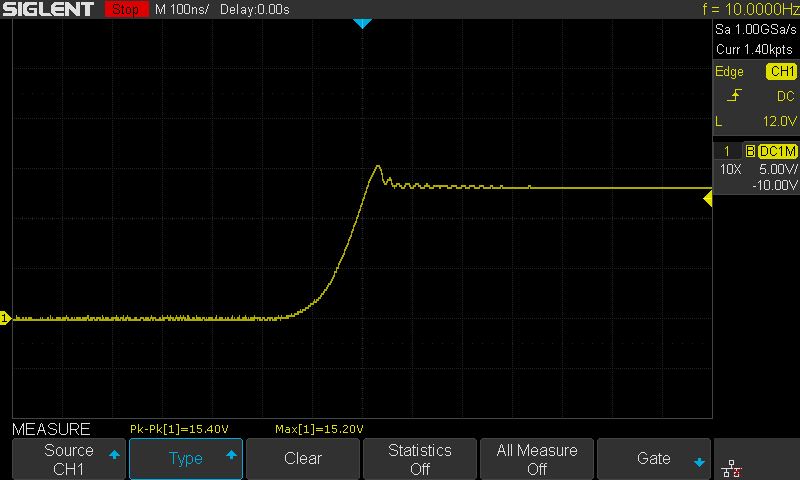This kind of repetitive misuse of the mosfets will eventually lead to a catastrophic failure in which the mosfet fails shorted.
This is not true if the device is operated in accordance with its specified avalanche limits.
The hot-end mosfet is the VS3060AD, which is rated for a single-pulse avalanche energy of 81mJ, and is also specifically rated for repetitive avalanche.
Avalanche failure is at its core a thermal failure, so as long as the single pulse energy and junction temperature limits are respected, there should be no problem.
Using your own measurements, the inductance of 1.3uH and a 40W 24V hot-end current of 1.67A will store an energy of 1.81uJ, which is the worst-case single pulse avalanche, and is 0.0022% of the datasheet limit.
In Marlin, the hot end PWM frequency is 7.6294 Hz, so the worst-case heating from the avalanche dissipation is 13.8uW, or basically 0.
This suggestion of adding a parallel diode is poorly informed and actually dangerous, since there is a real risk of fire if the used installs a high current diode backwards.







Description
While doing some validation of the mini E3V2 I noticed some nasty oscillation on the hotend mosfet drain pin. At first, I though it was a bit peculiar as I just assumed the hotend cartridge was basically a big resistor. Obviously there would be a bit of lead inductance but the oscillations wasn’t adding up to just a bit of parasitic inductance, so I measure the hotend. I found that there was ~1.3uH! This is a stock E3D V6 40W 12V cartridge. Below you can see what the drain pin looks like. The transition of the voltage going from low to high when the mosfet turns off.
Those voltage spikes are hitting just above the max BVDSS rating of the mosfets.
Now switching over to a 24V system things turn very ugly. Looking at the drain of Q1 we see a massive ripple once again. This pushes the drain pin of the mosfets over the rated BVDSS. In the capture below you can see the oscillation get clipped. This means the MOSFET has actually begun to avalanche and is acting as a zener... Now its not the end of the world to see a BVDSS break down every once and a while but on the E3 (V1-V2) its basically every cycle.
This kind of repetitive misuse of the mosfets will eventually lead to a catastrophic failure in which the mosfet fails shorted. I've been reading on several forms about mosfets failing (in general) on 3D printers and everyone is quick to blame the RDSon and over-temperatures of the mosfets. I'd be willing to bet more than half of those occurrences was actually due to this very issue. BTT please take note, anytime you switch something with an inductance you have to rate the mosfet with at least 2x the BVDSS rating compared to the voltage you are switching. So moving to a 60V mosfet will significantly help this situation. Also note, that by doing so you will not be getting rid of the oscillation, which if the mosfet is rated well enough, shouldn't be an issue. Alternatively, placing a well spec'd schottky diode in parallel to the device you are switching will provide a path for the currents to get shunted back to the source and eliminate the voltage spikes/oscillation. Which is what I have done below (cathode of diode to VCC, anode to switching side).
24V with Diode
12V with Diode
One can see that there is a tiny bit of overshoot but then the diode start conducting before it actually makes it too much above its respective VCC. In this case a fast switching diode is necessarily, so something like a 1N400X really isn't recommended. For this experiment I used a SB5100. I simply crimped it across the two hotend terminals. He is an example of what I did (not the actual heater cartridge used in this experiment):
This should be easy enough for people to add after the fact to protect their mosfets.
CAUTION: The orientation of the diode matters. The Cathode (or barrier bar) needs to be on the VCC pin. The anode needs to be on the switching (drain pin of mosfet) side.
FWIW, I am seeing this issue spread rampant across 3D printer motherboards from all vendors... please use your best judgement when printing for long periods of time. If you follow my advise on adding a diode, I am not responsible for any damaged caused by the modification :P